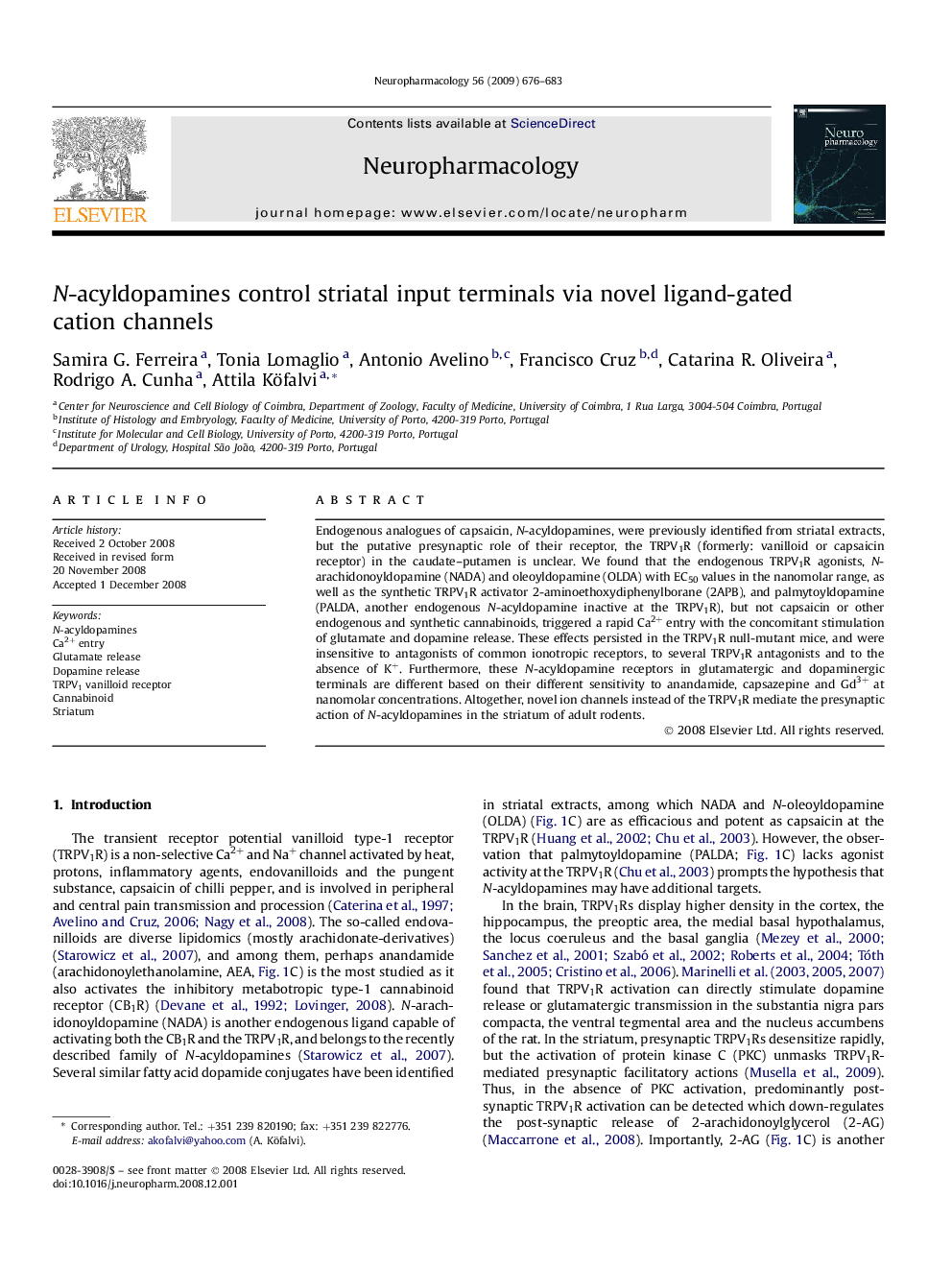| Article ID | Journal | Published Year | Pages | File Type |
|---|---|---|---|---|
| 2494406 | Neuropharmacology | 2009 | 8 Pages |
Abstract
Endogenous analogues of capsaicin, N-acyldopamines, were previously identified from striatal extracts, but the putative presynaptic role of their receptor, the TRPV1R (formerly: vanilloid or capsaicin receptor)Â in the caudate-putamen is unclear. We found that the endogenous TRPV1R agonists, N-arachidonoyldopamine (NADA) and oleoyldopamine (OLDA) with EC50 values in the nanomolar range, as well as the synthetic TRPV1R activator 2-aminoethoxydiphenylborane (2APB), and palmytoyldopamine (PALDA, another endogenous N-acyldopamine inactive at the TRPV1R), but not capsaicin or other endogenous and synthetic cannabinoids, triggered a rapid Ca2+ entry with the concomitant stimulation of glutamate and dopamine release. These effects persisted in the TRPV1R null-mutant mice, and were insensitive to antagonists of common ionotropic receptors, to several TRPV1R antagonists and to the absence of K+. Furthermore, these N-acyldopamine receptors in glutamatergic and dopaminergic terminals are different based on their different sensitivity to anandamide, capsazepine and Gd3+ at nanomolar concentrations. Altogether, novel ion channels instead of the TRPV1R mediate the presynaptic action of N-acyldopamines in the striatum of adult rodents.
Related Topics
Life Sciences
Neuroscience
Behavioral Neuroscience
Authors
Samira G. Ferreira, Tonia Lomaglio, Antonio Avelino, Francisco Cruz, Catarina R. Oliveira, Rodrigo A. Cunha, Attila Köfalvi,
